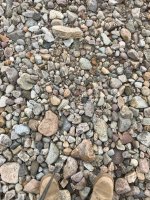MAMucker
Bronze Member
First, a (looks like a grey blue Argillite-Merrimack Stemmed (Possible Squibnocket) Stemmed Point: Late Archaic ATTACH]1714494[/ATTACH]





Second, a beat-up white Quartz -Thick, Spiked, Cape Stemmed (or a lobed Base Type?) Point




And last (but not least), A broken Black (Flint?) Atlantic Stemmed Drill: Late Transitional Archaic








Second, a beat-up white Quartz -Thick, Spiked, Cape Stemmed (or a lobed Base Type?) Point





And last (but not least), A broken Black (Flint?) Atlantic Stemmed Drill: Late Transitional Archaic




Attachments
Last edited:
Upvote
0






